Isabel Atkinson
Year 1 MArch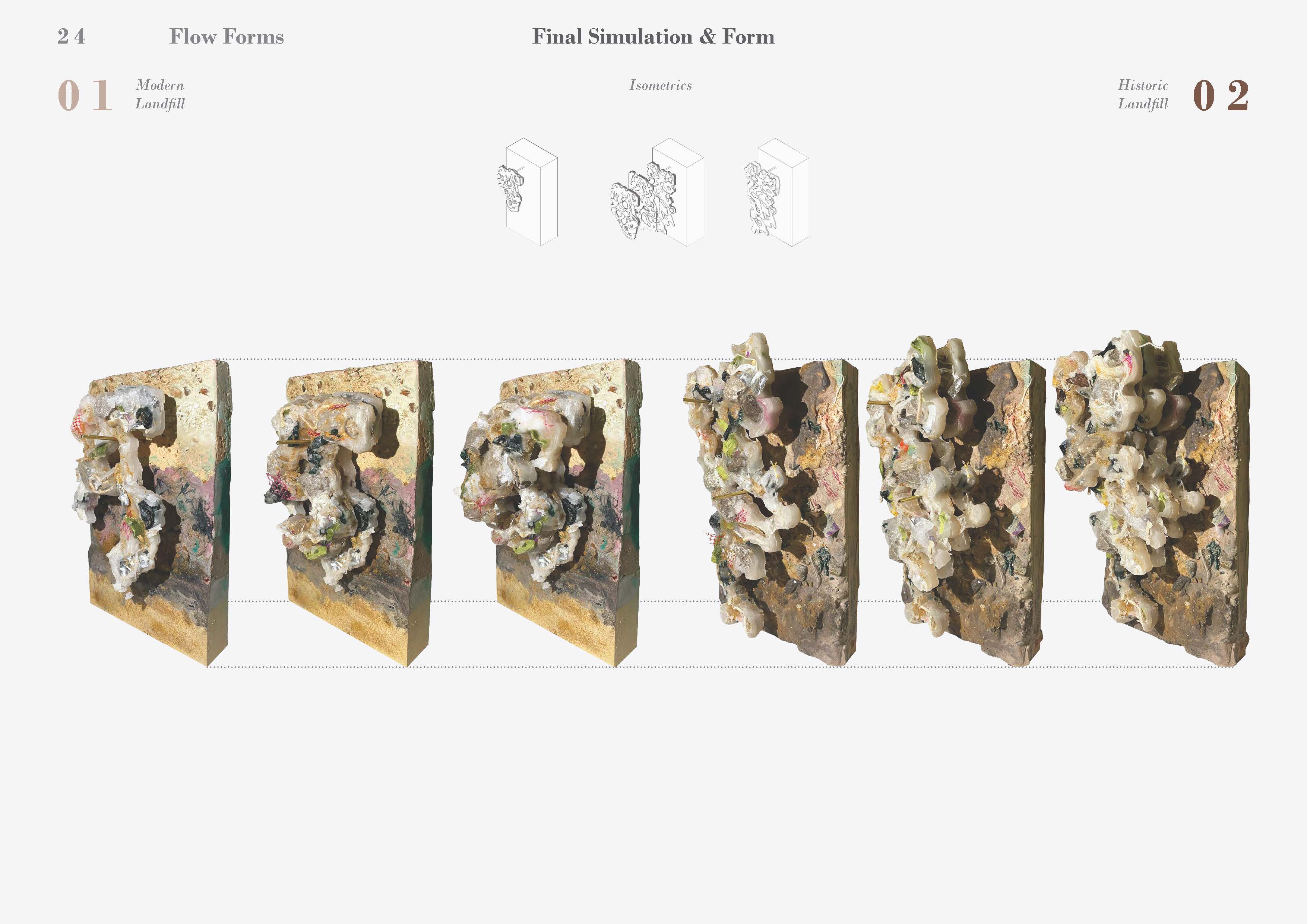
Reimagining The Toxic Landscape
Dersingham
Fen, UK
Across the UK, there are 20,000 historic landfills, with a significant number within the Fens at high risk of erosion and flooding due to sea level rise and increased rainfall from climate change. These historic landfills are unmanaged below the surface, with water-soluble pollutants percolating deep into the soil as leachate. This toxic slurry contaminates the ground, seeps into groundwater systems, and will inevitably end up in the sea if left unmanaged, resulting in widespread catastrophic effects on the environment.
By mining the Anthropocene, can our buried and forgotten landfill waste be utilized in the search for innovative building materials? Acting as geological ovens, can landfills contribute to a circular economy? Could excavation into historic landfills, pre-recycling, reveal an abundance of plastiglomerate?
This project focuses on the coastal historic landfill crisis. By utilizing thermal analysis of the landfill, bespoke engineered columns will be installed within the landfill to maximize the production of plastiglomerate, which will bind to the columns and structure. This will house the material recovery and innovation centre, where further excavated waste around the site will be sorted, cleaned, and upcycled to be sold within material markets. The excavation strategy will move from one historic landfill to the next by following a hierarchical mapping system, identifying which landfills are at the highest risk of erosion and pollution. The extracted material will be transported back to a main hub for material experimentation. The centre aims to engage with the local community by portraying the unsettling, embedded effects of our everyday waste while suggesting new ways to work with our destruction.
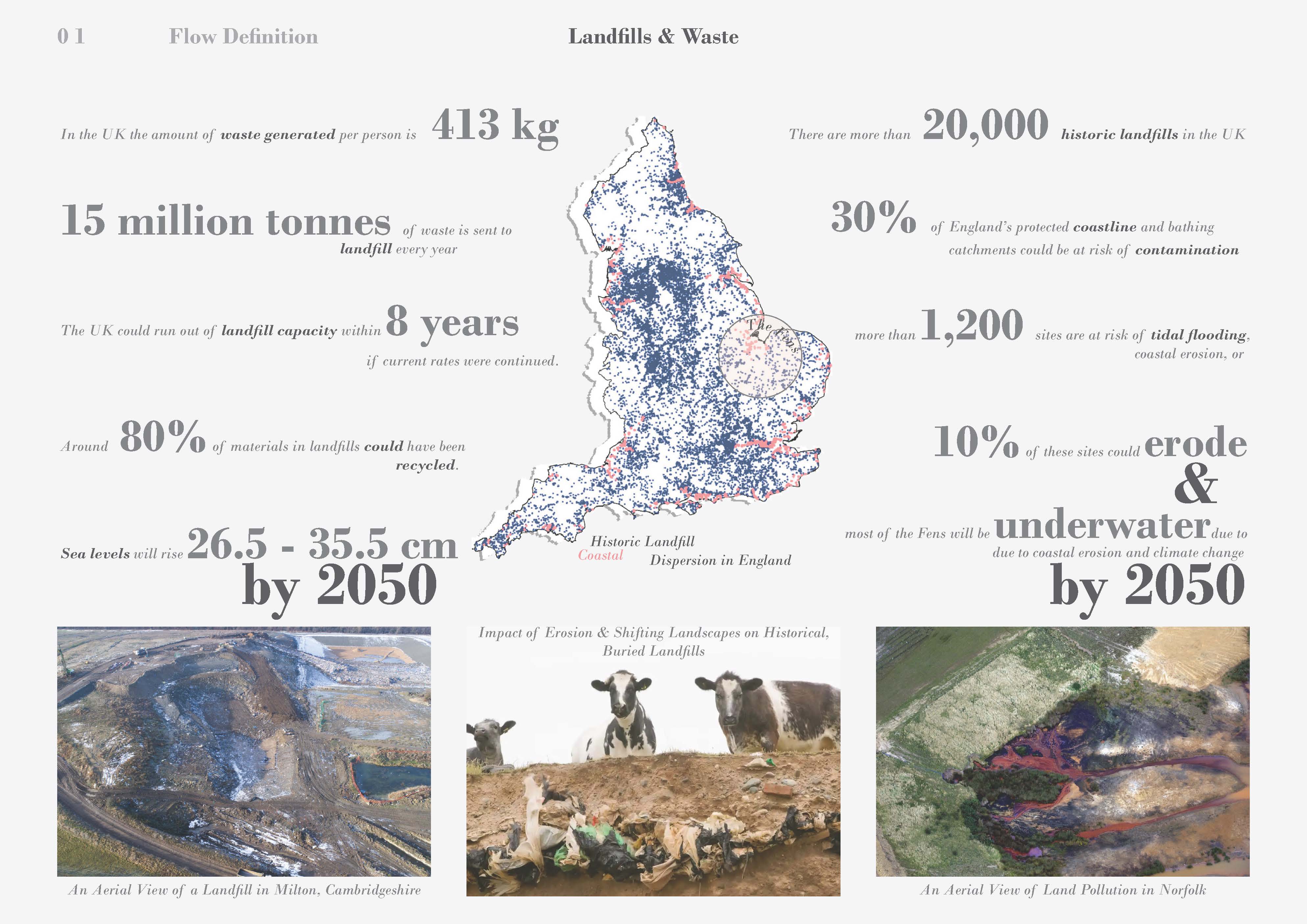





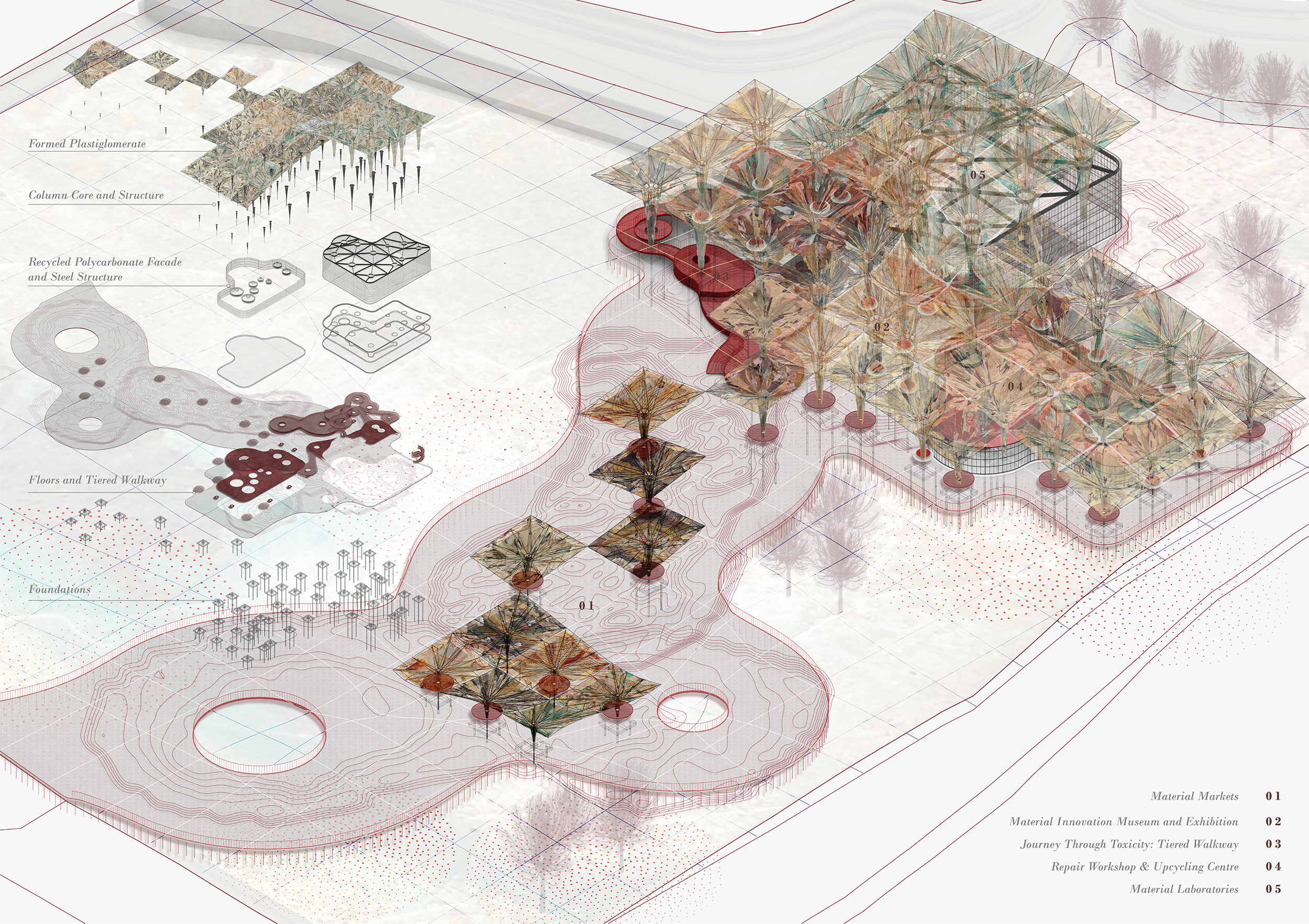
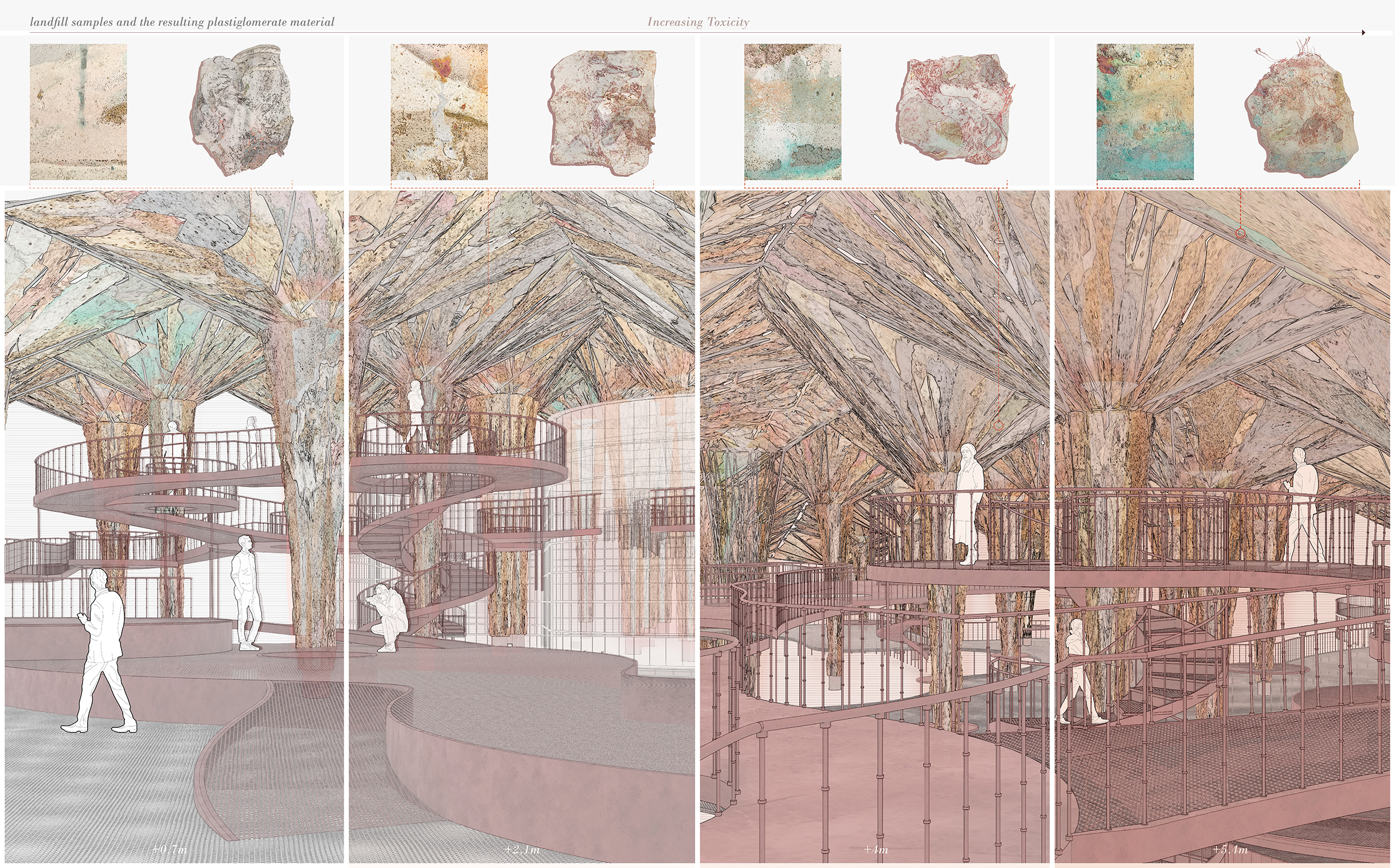
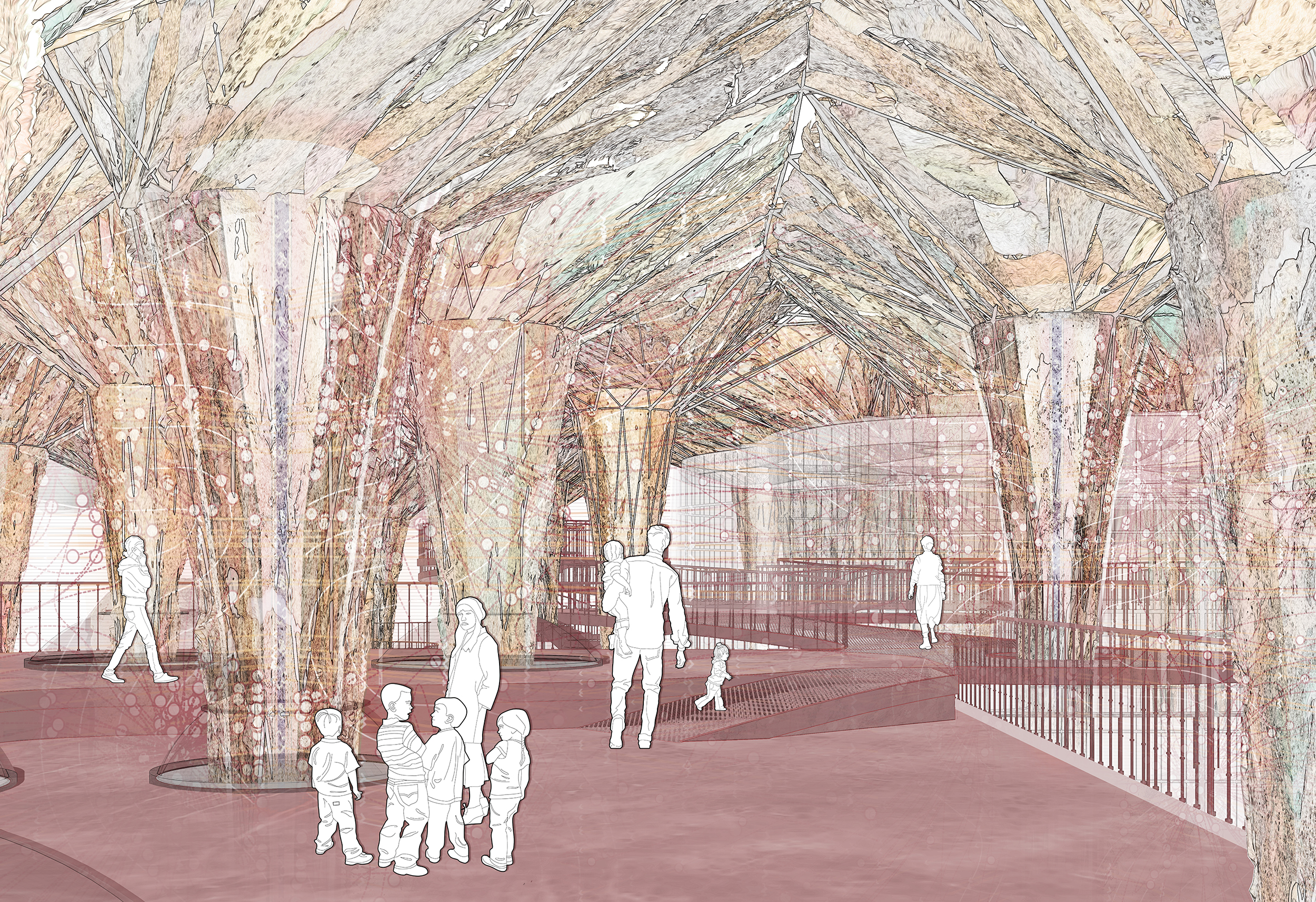

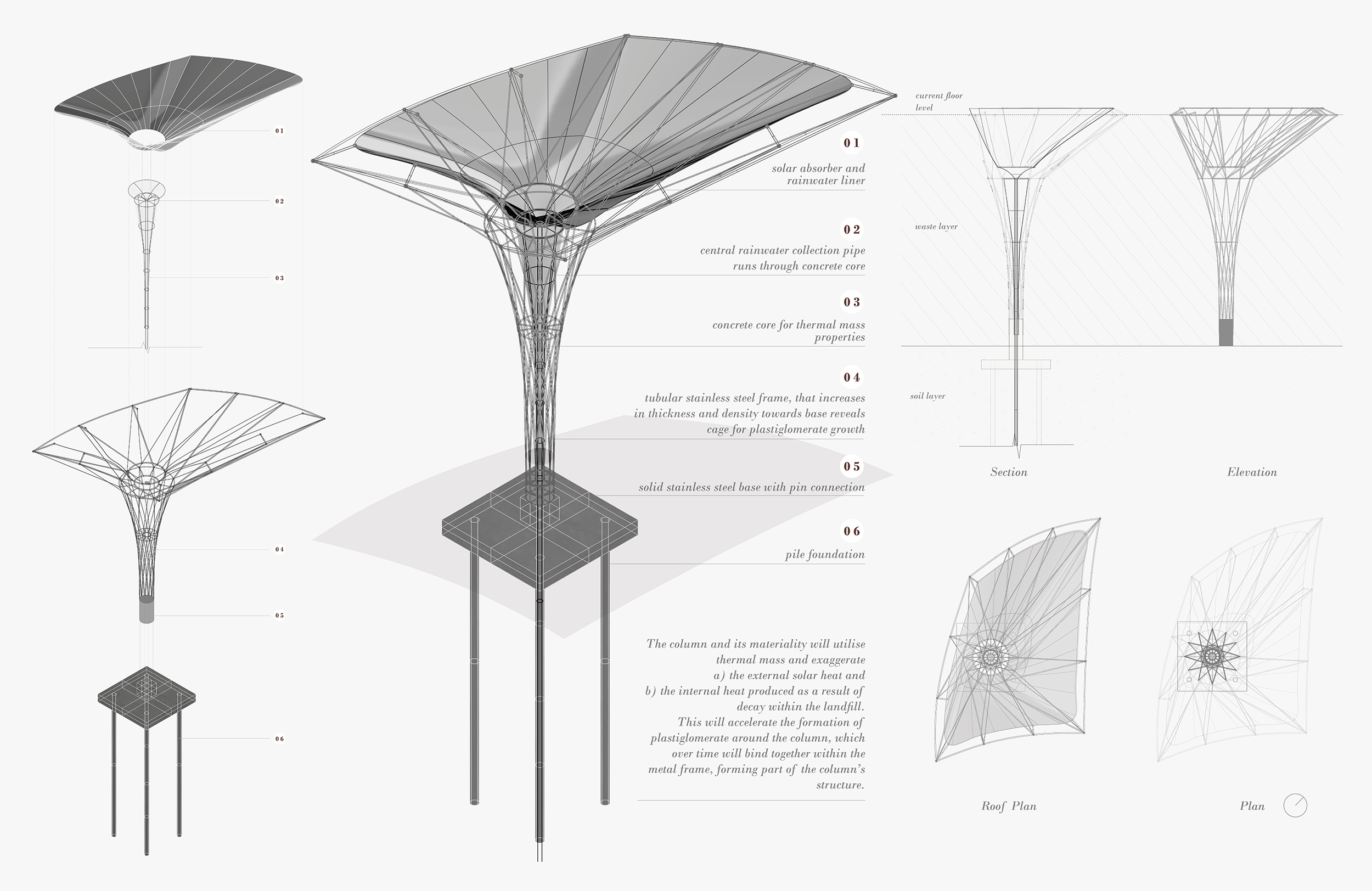
︎︎︎ Home
︎︎︎ Previous // Next ︎︎︎